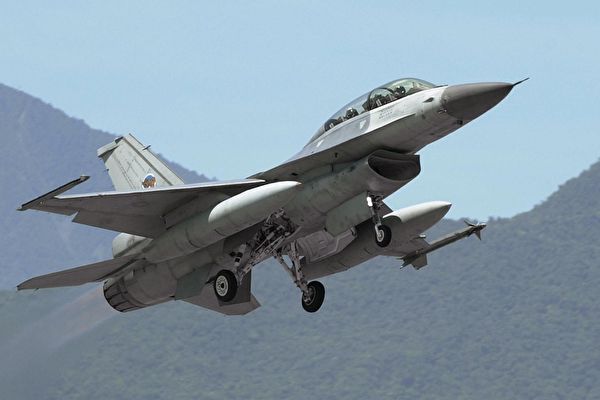The U.S. Air Force has confirmed that the world’s first known live-pilot manned fighter jet successfully engaged in a dogfight with an unmanned fighter jet within visual range in California, further enhancing the U.S. military’s deterrence against the Chinese Communist Party (CCP).
The aerial combat took place at Edwards Air Force Base in California, where two F-16 fighter jets flew at speeds of up to 1,200 miles per hour, engaging in combat within a distance of 2,000 miles. One F-16 was piloted by a human, while the other was controlled by an AI-operated F-16 experimental version, X-62A VISTA (Variable Integrated Simulator Test Aircraft).
This aerial confrontation is part of the U.S. Defense Advanced Research Projects Agency’s (DARPA) Air Combat Evolution (ACE) program initiated in 2019.
Officials stated that the success of involving X-62A VISTA in the aerial combat exercise will help the Air Force further enhance its autonomous unmanned aircraft programs.
The U.S. Air Force announced this breakthrough on social media on April 22.
Air Force Secretary Frank Kendall stated in a press release that the breakthrough achieved by the X-62A ACE team in 2023 has made autonomous air-to-air combat a reality, revolutionizing the combat aviation field.
Before this, autonomous flying was primarily used for predictable, rule-based flight aspects like the automatic ground collision avoidance systems to prevent aircraft crashes. However, the Chief of the U.S. Air Force Test Pilot School James Valpiani noted that dogfighting within visual range is one of the most dangerous and unpredictable flying environments that represent a set of entirely different skills that artificial intelligence needs to learn.
Valpiani emphasized that dogfighting involves a trust issue with autonomy, stating that “It’s inherently very dangerous. It’s one of the most difficult capabilities that military pilots have to master.”
As part of the initial testing phase, defensive maneuvers were initially employed to ensure flight safety, followed by entering into an “offensive high aspect ratio head-to-head engagement.” The Air Force and DARPA’s press releases did not disclose whether the manned fighter aircraft had the upper hand in this showdown.
The military stated that using machine-learning-based autonomous technology in critical flight systems will lay the foundation for the future autonomous development in aerospace, making it safer and more reliable for commercial and defense applications.
Bill Gray, the Chief Test Pilot at the Test Pilot School, emphasized that the X-62A ACE project is not just about achieving autonomous dogfighting but rather the first problem to be solved. He mentioned that every lesson learned will be applicable to every task that autonomous systems may undertake.
James Valpiani, Commander at the Test Pilot School, emphasized that dogfighting is a perfect case for applying machine learning. He said, “Dogfighting is incredibly dangerous. Therefore, if machine learning can operate effectively in such a dangerous environment like air-to-air combat, it has great potential to gain human trust when we look to less risky but equally complex application areas.”
DARPA and the U.S. Air Force Test Pilot School will continue to advance machine learning testing, with X-62A VISTA providing services to various research clients and offering academic experience for future testing and projects.
Integrating advanced AI technology into combat is a vital tool for the U.S. military to enhance deterrence against the CCP. The highly classified B-21 Raider stealth bomber silently conducted its maiden flight in California on November 10 last year. The B-21 is equipped with cutting-edge technology, boasting extended range and stealth capabilities, capable of countering CCP mobile missile threats. The B-21 carries deep-penetrating weapons, allowing it to strike underground facilities in case of a nuclear disaster elsewhere.
When enemy threats arise, the B-21 can detect the enemy’s radar scanning patterns, assess them using AI algorithms, transmit the data to allied operational networks, and circumvent interference with the aircraft’s sensors and communication data.
U.S. Air Force Secretary Kendall has repeatedly mentioned using the B-21 strategic bomber to deter the CCP and even stated that the B-21 could deploy mines in the Taiwan Strait right under the noses of the CCP military when addressing questions about a potential conflict in the Taiwan Strait.
(This article references reports from Fox News and Defense News.)

